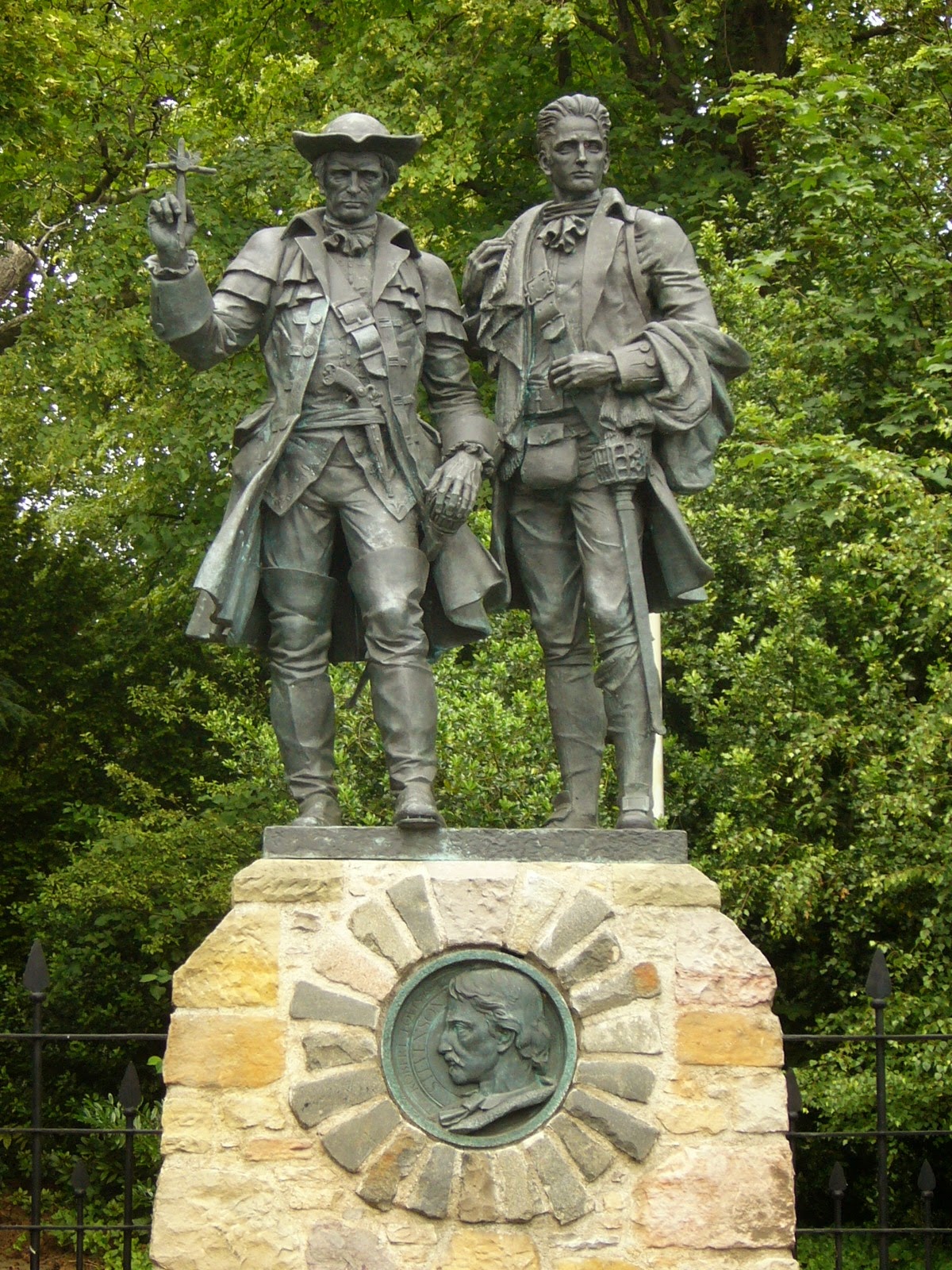The first time I had read Kidnapped was the abridged Ladybird version at my school library. Those books were most beautifully illustrated and one particular illustration caught my attention and has held me still - a startled young man at the edge of a stair-step which ended in the open air, illuminated by a flash of lightning. I had pretty much decided then that I would read the whole book someday. A little over a decade later, I have fulfilled my promise ! And besides the vanity, I am genuinely glad to have read the full book, though even the abridged one had failed to dampen the high-octane spirit of the story.
The title is a bit of a giveaway for the first part of the book, though soon, the story takes the form of a cat-and-mouse game, albeit dated three centuries ago. The first part of the book covers the origin of the travails - the kidnapping, to be precise, and the settings shift on a ship. Through a turn of events, David Balfour - the protagonist - finds himself side-by-side with a wanted man, escaping the law, very often extremely narrowly, while finding a way back. David is an honest, clever lad, with a very sturdy conscience and latent resilience, both physical and mental, though there are times when the schoolboy in him surfaces. Alan Breck (who, by the by, was pretty much a real and eminent figure in the mid-1700s) is a perfect companion for the dire conditions that David found himself in, and through immense troubles, the two of them made safely out of hostile lands.
This being a classic, I did have to force myself to keep reading in some parts, especially when the duo was sneaking through the endless 'heather' and 'rocks'. It did tend to get a bit tedious. The best parts of the books are the first fourteen chapters, which take place aboard a ship, and the last two chapters, where things get tied up. That leaves a disconcerting fourteen more chapters in between, which do not exactly make you hold your breath. But then classics are not meant to be Hardy Boys stories. The best part about the story was the sharp language. The conversations were charmingly witty. There was also a profusion of characters, besides the central figures of David and Breck. The author dwelt on each one long enough to give a fleeting impression of each before moving on to the next character, so that all in all, it was one long, eventful travelogue. The plot is anyway given to the scope of twists and turns, and the author employs enough craftiness to make you smirk, right upto the end.
On a personal front, I enjoyed the bond that developed between David and Breck; the kind that is forged in fire. Breck's character is that of the simple-hearted, sturdy men who recognise and value the good in man - whether friend or foe, while David is steeped in manners and conscience, which perfectly balanced the good-natured brashness of Breck. A little digging into the story brought out an interesting fact: at Corstorphine road in the city of Edinburgh, the Scottish sculptor Alexander Stoddart erected a statue of David Balfour and Alan Breck in 2004, in memory of the author R.L. Stevenson. The statue is placed at the Western Corner, where the two friends parted at the end of the book.
I did not find anything thought-provoking in the book, but there was a good template offered about men of different dispositions and what to expect of them. At the end of the day, Kidnapped lived up to my expectations born way back !
Images courtesy Wikipedia, www.marelibri.com



Comments
Post a Comment